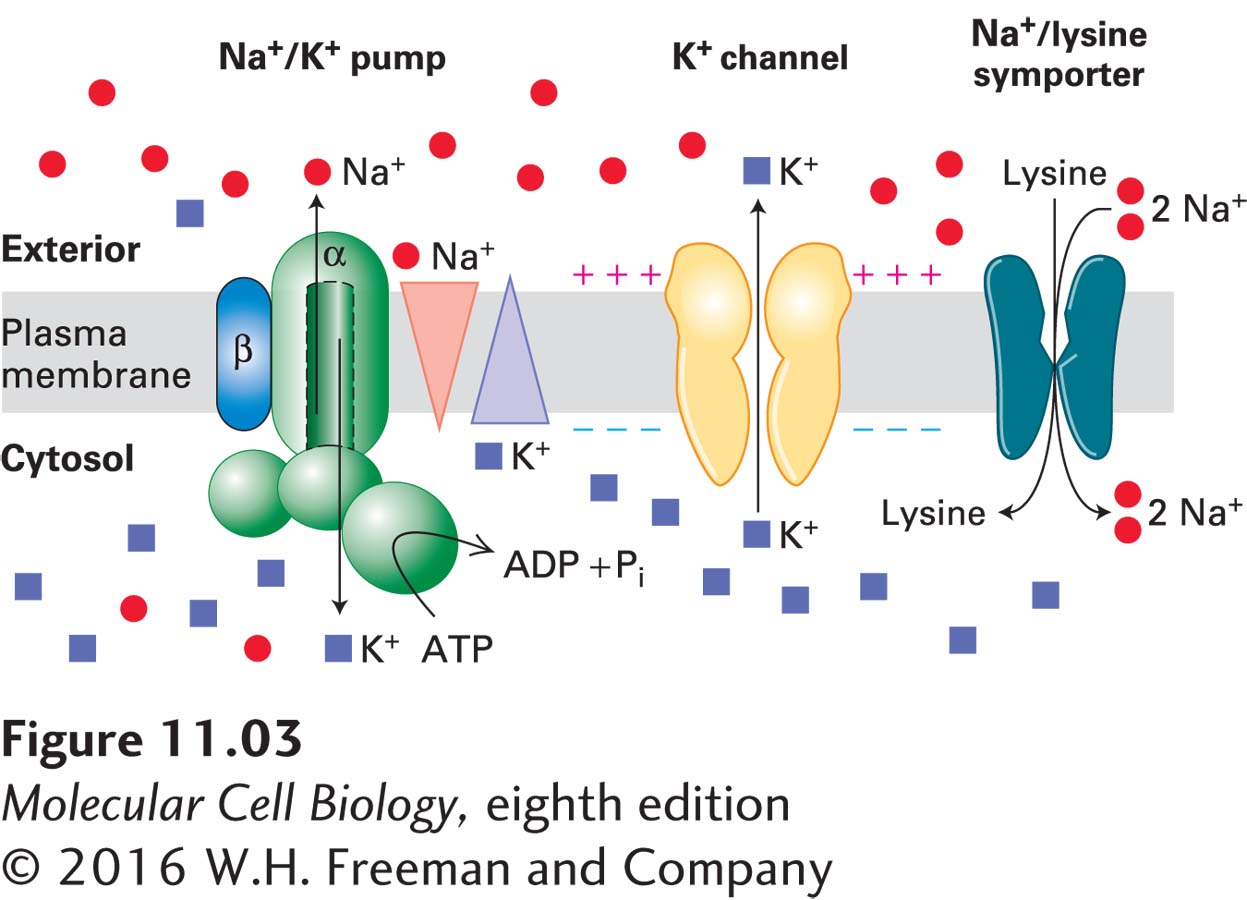
FIGURE 11- 3 Multiple membrane transport proteins function together in the plasma membrane of metazoan cells. Gradients are indicated by triangles with the tip pointing toward lower concentration. The Na+/K+ ATPase in the plasma membrane uses energy released by ATP hydrolysis to pump Na+ (red circles) out of the cell and K+ (blue squares) inward; this creates a concentration gradient of Na+ that is greater outside the cell than inside, and one of K+ that is greater inside than outside. Movement of positively charged K+ ions out of the cell through membrane K+ channels creates an electric potential across the plasma membrane— the cytosolic face is negative with respect to the extracellular face. A Na+/lysine transporter, a typical sodium/amino acid cotransporter, moves two Na+ ions together with one lysine from the extracellular medium into the cell. “Uphill” movement of the amino acid is powered by “downhill” movement of Na+ ions, which in turn is powered both by the outside- greater- than- inside Na+ concentration gradient and by the negative charge on the inside of the plasma membrane, which attracts the positively charged Na+ ions. The ultimate source of the energy to power amino acid uptake comes from the ATP hydrolyzed by the Na+/K+ ATPase, since this pump creates both the Na+ ion concentration gradient and, via the K+ channels, the membrane potential, which together power the influx of Na+ ions.
[Leave] [Close]